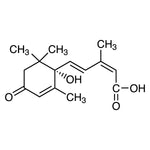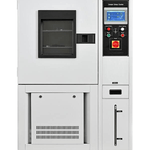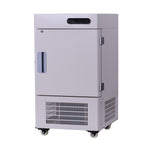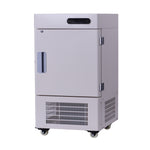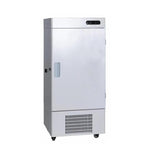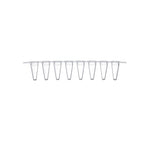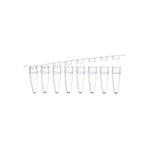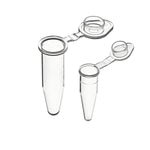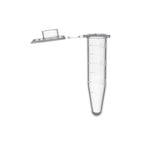You have no items in your shopping cart.

The proper care and preservation of a pipette and learning how to clean pipettes properly is arguably one of the restorative practices for a successful lab operation. But what steps do you follow to ensure proper pipette cleaning?
Cleaning a pipette properly is a rigorous but vital process. It requires you to follow a series of procedures and detergents depending on the contaminants. Ideally, executing a strict and systematic pipette maintenance schedule could be the distinguishing factor in acquiring new, pricey apparatus and getting precise capacity apparatuses.
Ideally, a carefully cleaned pipette will not only ensure durability but will also guarantee you get a more precise result. While pipette cleaning is laborious and needs practice and complete focus, getting a better understanding of the cleaning techniques makes it easier and improves the accuracy of your results.
However, there's much more to it than just knowing how to clean pipettes. As you will learn in this guide, there are several types of pipette cleanings to use and different procedures depending on the contents in your pipette. Here is what you should know about how to clean pipettes.
Types of Proper Pipette Cleaning
1. Exterior Pipette Cleaning: Typically, you can clean most pipettes externally using standard lab or household cleaning agents, alcohol, or soaps. You can easily clean the pipettes outside effectively by wiping or spraying the external apparatus parts. For complete sterilization, allow the agent to sit on your apparatus for 10-15 minutes before cleaning it off.
2. Interior Pipette Cleaning: the process of properly cleaning your pipettes inside can be lengthy since it mandates complete disassembly. You must clean the individual components. However, you can follow these few tips for a more effortless experience.
- Consult the manual guide for specific cleaning directions.
- Get cotton pads and dip into a washing agent to eradicate clogs and ensure adequate cleaning of the air passages.
- The next step is to clean pistons using clean water. If any components have any issues, you can replace or fix them appropriately.
- Follow this with carefully greasing the pistons (and lightly to add) with an appropriate lubricant.
- Lastly, reassemble the components and assess to ensure your apparatus works smoothly.
How to Properly Clean a Pipette: Step by Step Guide
What does it take to clean your pipette properly? Well, depending on whether you want to give them a deep cleaning or want to wash off a particular type of contaminant, these few steps outline the best way to clean a pipette properly.
Step 1: Dismantling the pipette (daunting but essential)
Start by dismantling your pipette: when you purchase your pipettes, you will notice that they come with an instructor's manual that outlines how to dismantle and properly clean them. If not, most of the available types of pipettes need you to remove their tip ejectors, detach the lower and upper parts, and finally remove the pipette's piston and O-ring.
Note: ensure that you don't forget to reassemble the pipettes after cleaning!
After dismantling, you can rinse all the separate components in distilled water or a specific cleaner, depending on the contaminants present.
Step 2: Removing specific contaminants
If your pipettes are contaminated, you should use several processes to properly clean the pipettes, although it all depends on the contaminant. You can refer to the manufacturer's instructions for a detailed account of how to clean specific pipettes, but here is a general overview on removing the most common contaminants:
- Contagious: This is a specific process that needs you to autoclave your pipette section for approximately half an hour and let it cool before reassembly.
- Aqueous: Start by rinsing all contaminated pipette parts with 70% ethanol or clean water and air them to dry.
- Radioactive: Put your apparatus in a cleaning solution, preferably Decon, rinse, and then air dry them.
- Organic: The first step is to allow the contents to evaporate or dip your pipette in a cleaning detergent and let air drying.
- Protein stains: Rinse using a detergent and let it dry completely. Note: DON'T use alcohol since it sets the proteins.
- Nucleic acid substances: Boil in glycine/HCI buffer at a constant pH of 2 for around 10 minutes. Afterwards, rinse, and finally, allow the apparatus to dry.
- RNase: Start by rinsing the pipette with a detergent, and then rinse using distilled water. You can also rinse in ethanol (95%) and leave them to dry. Soak the pipette components in hydrogen peroxide (3%) for approximately 10 minutes, rinse thoroughly with clean water, and allow complete drying.
Note:
You can also autoclave your pipettes for approximately 20 minutes, thoroughly autoclave your apparatus to eradicate DNase and any infectious liquids. Ensure that you consult with the manufacturer's instructions before deciding to place the apparatus in an autoclave, or you may find that your apparatus has altered slightly!
Step 3: Assemble the Pipette
After the cleaning process is complete, you must ensure that all the pipette's components are dry before reassembling them. Start by lubricating the piston lightly with silicone grease (generally comes with the pipettes) and then reassemble your apparatus. While at it, ensure you remember the O-ring! Assess your pipette's calibrations before you can bring them back to normal usage.
Conclusion
In this case, a properly cleaned and maintained apparatus, pipette to a user, is as essential as an adequately cleaned and maintained instrument to musicians or even artists. Ideally, if your trumpet is unclean, not well lubricated, rusted, clogged, bent, scratched, or even broken, the results it produces will not be as good as those of a well-maintained instrument; and pipettes are not any different. In your research, the best way to ensure that you get the most precise, trustworthy, and practical results is to keep your pipettes (among other apparatus) in optimal working shape and condition.
In the end, properly cleaning the pipettes is only one approach to taking care of them. In addition, you must take appropriate measures and techniques to maintain their shape in terms of calibration and storage and understand the several things you shouldn't do or use your valuable pipettes for!
Happy pipetting!

